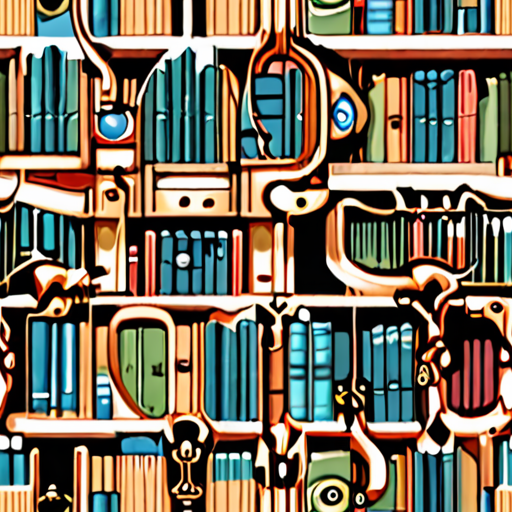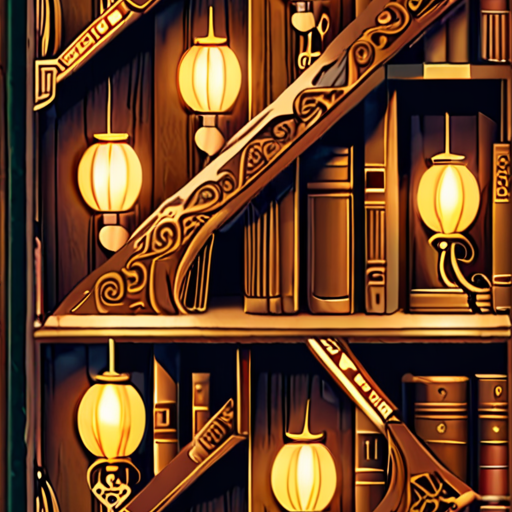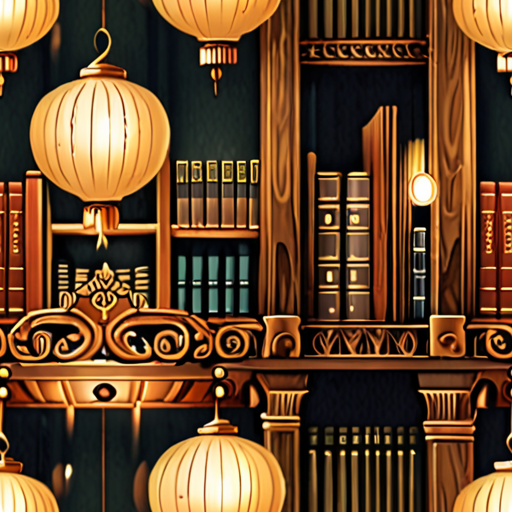Delving into the world of literature can be a complex and intricate journey, filled with nuances and subtleties that often go unnoticed by the untrained eye. At the heart of this labyrinthine landscape lies a multitude of literary techniques, each one serving as a tool for authors to convey their message, evoke emotions, and paint vivid pictures in the minds of readers. From the subtlest hints of symbolism to the most overt displays of imagery, these techniques form the very fabric of literature itself, weaving together threads of meaning and interpretation that continue to captivate audiences to this day.

Literary Techniques and Examples
I’m often asked what literary techniques are and how they’re used in writing.
- Imagery: A literary device that uses language to create vivid sensory experiences for the reader.
- Metaphor: A comparison between two unlike things without using “like” or “as.”
- Simile: A comparison between two unlike things using “like” or “as.”
- Alliteration: The repetition of initial consonant sounds in words that are close together.
- Personification: Attributing human qualities or characteristics to non-human entities, such as objects or animals.
- Symbolism: Using objects, colors, or other elements to represent abstract ideas or concepts.
- Irony: A contrast between what is expected and what actually occurs.
- Hyperbole: An exaggeration used for emphasis or effect.
- Oxymoron: A combination of two words or phrases that seem contradictory.
- Onomatopoeia: Words that imitate the sounds they describe.
- Allusion: A reference to a person, place, event, or work of art that is outside the text itself.
- Foreshadowing: Hints or clues that suggest events that will occur later in the story.
- Flashback: A narrative technique that involves interrupting the present action to describe a past event.
- Stream-of-consciousness: A writing style that seeks to replicate the natural flow of thoughts and feelings.
- Dialogue: Conversation between characters in a story.
- Persuasion: A literary device used to convince or persuade the reader to adopt a particular point of view.
- Rhetoric: The art of effective communication, particularly in written or spoken language.
- Tone: The attitude or mood conveyed by the writer through their choice of words and language.
- Point of View: The perspective from which the story is told, including first-person, third-person limited, and omniscient.
- Setting: The time and place in which the story takes place.
- Plot: The sequence of events that make up the narrative.
- Character Development: The growth or change experienced by a character throughout the story.
- Conflict: A challenge or obstacle that the protagonist must overcome.
- Theme: The underlying idea or message of the story.
These literary techniques can be used to create a rich and engaging reading experience, and understanding them can help you become a better writer.
The 7 Literary Text
I’ve often been asked what makes a literary piece truly great, and my answer has always been rooted in the 7 literary standards that I believe elevate a work of literature beyond mere entertainment.
- Artistry
- Intellectual Beauty
- Suggestiveness
- Spiritual Value
- Permanence
- Universality
- Style
Artistry refers to the skillful use of language, imagery, and other literary devices to create a unique and captivating reading experience. A well-crafted sentence can transport us to another world, evoke powerful emotions, and leave a lasting impression long after we finish reading.
Intellectual beauty speaks to the complexity and depth of a literary work, inviting readers to engage with its themes, ideas, and symbolism. A great novel or poem challenges our assumptions, broadens our perspectives, and encourages us to think critically about the world around us.
Suggestiveness is the ability of a literary work to convey meaning and emotion through subtle hints and suggestions rather than explicit statements. This requires a delicate balance between subtlety and clarity, leaving room for interpretation and imagination.
Spiritual value refers to the capacity of a literary work to touch our hearts, souls, and spirits, evoking feelings of wonder, awe, and transcendence. A great work of literature can inspire us, comfort us, and connect us to something greater than ourselves.
Permanence is the enduring quality of a literary work, allowing it to remain relevant and impactful over time. A timeless classic continues to resonate with readers, speaking to universal human experiences and emotions that transcend generations.
Universality refers to the ability of a literary work to speak to people from diverse backgrounds, cultures, and experiences. A great novel or poem can bridge cultural divides, fostering empathy, understanding, and connection among readers.
Style is the distinctive voice, tone, and language of a literary work, setting it apart from others and making it instantly recognizable. A unique writing style can captivate readers, draw them into the story, and keep them engaged until the very end.

The 20 Elements of Literature
I’ve compiled a comprehensive list of the 20 essential elements of literature, which every writer and reader should be familiar with.
- Tone : The attitude or mood conveyed through language and style.
- Perspective : The point of view from which a story is told, whether first-person, third-person limited, or omniscient.
- Imagery : The use of sensory details to create vivid descriptions and evoke emotions.
- Symbolism : The use of objects, colors, or other elements to represent abstract ideas or concepts.
- Metaphor : A comparison between two unlike things without using “like” or “as.”
- Alliteration : The repetition of initial consonant sounds for emphasis or musical effect.
- Personification : Attributing human qualities or characteristics to non-human entities, such as objects or animals.
- Irony : A contrast between what is expected and what actually occurs, often used for comedic or satirical effect.
- Satire : A literary genre that uses irony, sarcasm, or ridicule to criticize or expose vices or follies.
- Foil : A character who contrasts with another character to highlight their traits or flaws.
- Flashback : A narrative technique that jumps backward in time to reveal important events or backstory.
- Foreshadowing : Hints or clues that suggest future events or plot twists.
- Hyperbole : An exaggeration used for emphasis or effect.
- Idiom : A phrase or expression with a non-literal meaning.
- Juxtaposition : The placement of two or more elements side-by-side to compare or contrast them.
- Motif : A recurring theme or idea that runs throughout a work of literature.
- Oxymoron : A combination of two words or phrases that seem contradictory, such as “jumbo shrimp.”
- Onomatopoeia : Words that imitate the sounds they describe, such as “buzz” or “meow.”
- Point of View : The perspective from which a story is told, including first-person, third-person limited, and omniscient.
- Rhetorical Device : A figure of speech used to convey meaning or persuade the audience, such as metaphor, simile, or allusion.
- Setting : The time and place in which a story takes place, including physical and cultural environments.
- Theme : The underlying idea or message of a work of literature, often explored through symbolism, motifs, or foreshadowing.
- Unreliable Narrator : A narrator whose credibility or trustworthiness is called into question, often due to biases, lies, or distortions.
- Voice : The unique personality, tone, or style of a narrator or character.
- Wordplay : The use of language in a creative or playful way, often involving puns, double meanings, or other forms of linguistic trickery.

Understanding Literary Styles
I’m often asked what makes a great story, and my answer always comes back to understanding the different literary styles. As a writer, I believe it’s essential to grasp these styles to effectively convey your message and engage your audience. In this article, we’ll explore the five primary literary styles: expository, descriptive, narrative, persuasive, and creative.
Expository Style
The expository style is used to explain or describe a subject. It’s a straightforward approach that aims to inform or educate the reader. Expository writing can take many forms, including essays, articles, and textbooks. When writing in an expository style, it’s crucial to present facts and information in a clear and concise manner. This style is perfect for conveying complex ideas or explaining a process.
- Characteristics: Informative, explanatory, and objective
- Examples: Essays, articles, textbooks, instructional guides
- Key features: Clear structure, concise language, and factual accuracy
Descriptive Style
The descriptive style uses sensory details to paint a vivid picture in the reader’s mind. It’s a powerful tool for creating atmosphere and mood, making it ideal for poetry, short stories, and novels. When writing descriptively, focus on using sensory language to engage the reader’s senses and imagination.
- Characteristics: Imaginative, evocative, and engaging
- Examples: Poetry, short stories, novels, travel writing
- Key features: Vivid imagery, sensory details, and emotional resonance
Narrative Style
The narrative style tells a story, often with a beginning, middle, and end. It’s a popular choice for fiction writing, as it allows authors to create characters, plot twists, and conflicts. When writing narratively, focus on crafting a compelling storyline and well-developed characters.
- Characteristics: Storytelling, character-driven, and plot-focused
- Examples: Novels, short stories, screenplays, memoirs
- Key features: Engaging plot, well-developed characters, and pacing
Persuasive Style
The persuasive style aims to convince the reader of a particular point of view or argument. It’s commonly used in opinion pieces, editorials, and advertising copy. When writing persuasively, focus on presenting a clear argument, using evidence and logic to support your claims.
- Characteristics: Argumentative, convincing, and persuasive
- Examples: Opinion pieces, editorials, advertising copy, speeches
- Key features: Clear argument, logical reasoning, and persuasive language
Creative Style
The creative style is a blend of the other four styles, often incorporating elements of imagination, innovation, and experimentation. It’s a versatile style that can be used in various forms of writing, including poetry, fiction, and nonfiction. When writing creatively, focus on pushing boundaries and exploring new ideas.
- Characteristics: Innovative, imaginative, and experimental
- Examples: Poetry, fiction, nonfiction, hybrid genres
- Key features: Originality, creativity, and risk-taking
By mastering these five literary styles, you’ll become a more effective writer, able to adapt to different situations and audiences. Remember, each style has its unique characteristics, and understanding these will help you choose the right approach for your writing project. Whether you’re writing for entertainment, education, or persuasion, knowing how to employ these styles will elevate your writing and engage your readers.
7 Types of Writing Styles with Examples
I’ve worked with various writing styles throughout my career, and I’m excited to share seven common ones with you.
-
1. Expository Writing Style
This style aims to explain or describe a subject, often providing information or instructions. For example:
- How-to articles, like “10 Steps to Write a Novel”
- Textbooks, which provide detailed explanations of complex topics
- News reports, which aim to inform readers about current events
-
2. Descriptive Writing Style
This style uses vivid language to describe people, places, objects, or experiences. For instance:
- Poetry, which often employs descriptive language to evoke emotions
- Travel writing, which describes destinations and cultural experiences
- Product descriptions, which highlight the features and benefits of a product
-
3. Narrative Writing Style
This style tells a story, often with a beginning, middle, and end. Consider:
- Fiction novels, which transport readers to imaginary worlds
- Memoirs, which recount personal experiences and anecdotes
- Biographies, which chronicle the lives of notable individuals
-
4. Persuasive Writing Style
This style aims to convince readers to adopt a particular point of view or take action. Think:
-
5. Argumentative Writing Style
This style presents evidence to support a claim or argument. Look at:
-
6. Creative Writing Style
This style emphasizes imagination and originality. Explore:
-
7. Technical Writing Style
This style conveys complex information in a clear and concise manner. Consider:

The Seven Literary Standards
I’ve often been asked what makes great literature truly stand out, and my answer lies in the seven literary standards that I believe every writer should strive for.
- Artistry
- Suggestiveness
- Intellectual Value
- Spiritual Value
- Permanence
- Universality
- Style
Artistry refers to the skillful use of language, imagery, and other literary devices to create a unique and captivating reading experience. A well-crafted story can transport us to new worlds, evoke powerful emotions, and leave a lasting impression long after we finish reading.
Suggestiveness is the ability to convey complex ideas, themes, and emotions through subtle hints and suggestions rather than explicit statements. This requires a deep understanding of human nature, psychology, and the power of suggestion itself.
Intellectual value refers to the depth and complexity of a work’s ideas, themes, and messages. Great literature challenges our assumptions, broadens our perspectives, and encourages us to think critically about the world around us.
Spiritual value speaks to the emotional resonance and personal connection we feel with a work of literature. It’s the sense of transcendence, wonder, or awe that lingers long after we finish reading.
Permanence refers to the enduring relevance and timelessness of a work’s themes, ideas, and messages. Great literature continues to resonate with readers across generations, cultures, and time periods.
Universality is the ability of a work to speak to universal human experiences, emotions, and concerns. Whether it’s love, loss, hope, or despair, great literature finds ways to connect with readers on a fundamental level.
Style refers to the unique voice, tone, and aesthetic of a work. It’s the distinctive flavor, texture, and atmosphere that sets a piece apart from others and makes it memorable.
In conclusion, these seven literary standards serve as a guiding framework for writers who seek to create truly exceptional works of literature. By striving for artistry, suggestiveness, intellectual value, spiritual value, permanence, universality, and style, we can craft stories that captivate, inspire, and transform readers in profound ways.

0 Comments